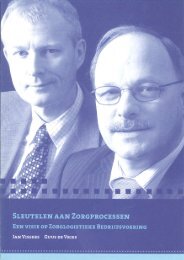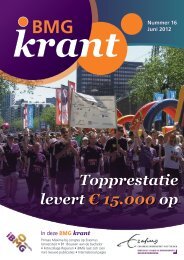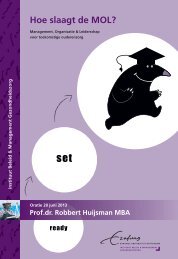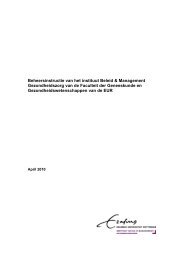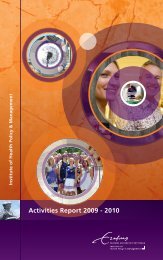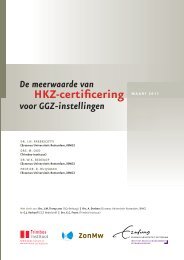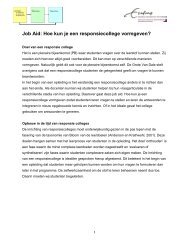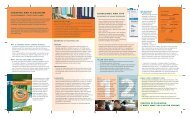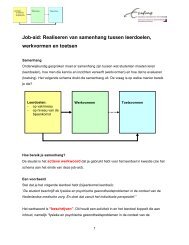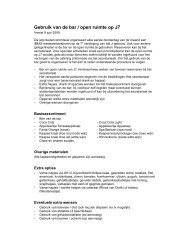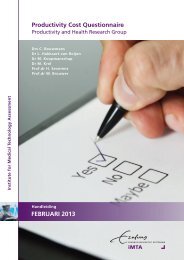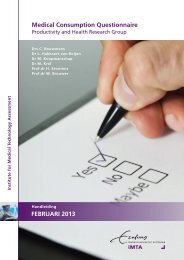Marten J. Poley - Erasmus Universiteit Rotterdam
Marten J. Poley - Erasmus Universiteit Rotterdam
Marten J. Poley - Erasmus Universiteit Rotterdam
- No tags were found...
Create successful ePaper yourself
Turn your PDF publications into a flip-book with our unique Google optimized e-Paper software.
Short-Term and Long-Term Health-Related Quality of Life after ARM and CDH 57TACQOL questionnaire. The developers of the TAIQOL also created aninstrument for use with children between the ages of 5 and 15 years, named theTACQOL questionnaire. 15 Its seven domains are: pain and symptoms, basic motorfunctioning, autonomy, cognitive functioning, social functioning, global positiveemotional functioning, and global negative emotional functioning. Each domainconsists of eight item pairs. 16 The first part of each item assesses the presence ofhealth status problems. The second part assesses the emotional response to suchproblems. As with the TAIQOL questionnaire, each item pair is encoded into onesingle score, ranging from 0 to 4. However, no emotional responses are askedregarding 'global positive emotional functioning' and 'global negative emotionalfunctioning', since this would lead to nonsensical results. In these two domains,the item scores range from 0 to 2. Consequently, the domain scores range from 0to 32 for all domains, except those concerning emotional functioning, which rangefrom 0 to 16. Higher scores correspond to better HRQoL. Both the TAIQOL andthe TACQOL have been validated in several patient groups since they came intouse, with promising results. 16,17SF-36 questionnaire. The SF-36 questionnaire consists of 36 items organizedinto eight domains: physical functioning, role-physical, bodily pain, generalhealth, vitality, social functioning, role-emotional, and mental health. The SF-36domain scores range from 0 to 100, with higher scores indicating better HRQoL.Results can be aggregated into a physical and a mental health summary measure.These summary measures were linearly transformed to a mean of 50 andstandard deviations of 10 in the general US population. Evidence on thepsychometric performance of the widely used SF-36 is mounting. 18,19StatisticsStatistical analyses were carried out using the t test for two independent samplemeans and the t test for the significance of a correlation (two-tail probabilities).Results were considered statistically significant if they were at the P < 0.05 level.4.3 RESULTSRespondentsOf all 526 ARM patients and 285 CDH patients who underwent treatment for theirconditions in the study period, we excluded patients who were deceased (ARM,n = 54; CDH, n = 86), were severely cognitively disabled (ARM, n = 8; CDH,n = 7), or could not be traced (ARM, n = 53; CDH, n = 24). The remaining 411ARM patients and 168 CDH patients were sent questionnaires. The response rateamounted to 70% (n = 286) in ARM patients and 66% (n = 111) in CDH patients.Because extracorporeal membrane oxygenation (ECMO) was not applied in thehospital until January 1992, only four (all in the 1–4 years age group) of all 111CDH patients participating in this study were treated with ECMO.




